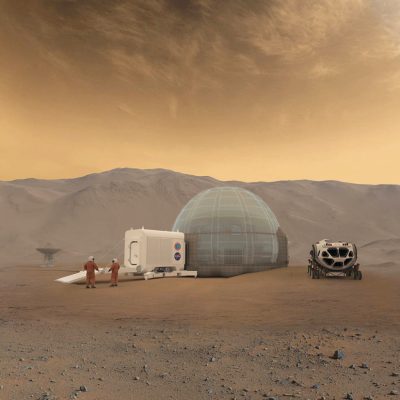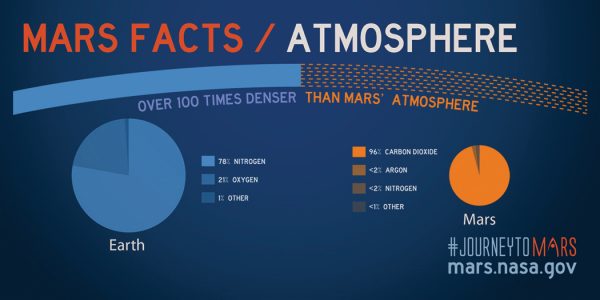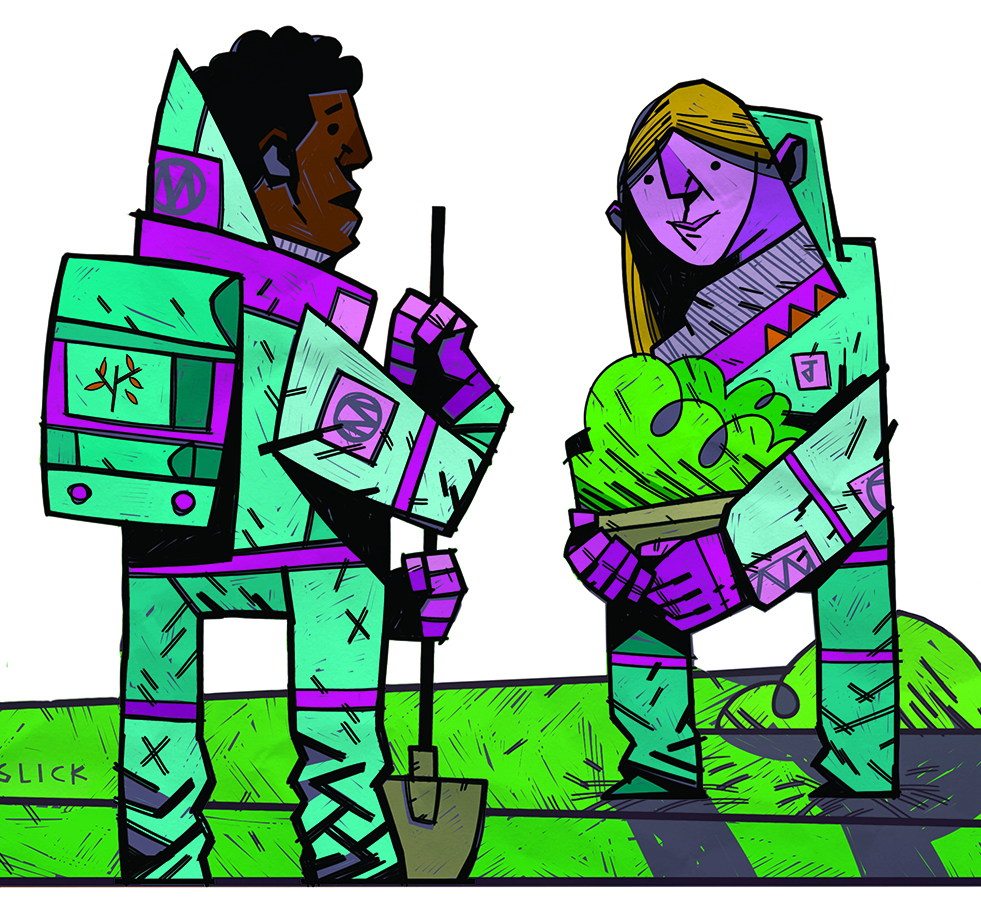Open for Discussion: Surviving on Mars
By Roberto Molar Candanosa April/May 2017
The National Aeronautics and Space Administration (NASA) and other aerospace corporations are working to send humans to Mars by the 2030s. Beyond just exploring Mars, the ultimate goal is to stay there for months. Although scientists and engineers are trying to make space travel relatively fast, a one-way trip to Mars would take about 8 months. The rockets and spacecraft will have to be powerful enough to launch astronauts into deep space with supplies and equipment for months on their way to Mars—and back. But when astronauts arrive, living on the Red Planet could be harder than the trip itself. So, what are some things the first astronauts should prepare for?
Staying warm
Because it is farther away from the Sun than Earth, Mars is very cold. Sunlight and heat reaching the Red Planet is a lot less than what Earth gets. Also, the Martian atmosphere is not as thick as Earth’s atmosphere, which keeps our planet warm. Consider what it would be like to stand near Mars’ equator, where sunlight hits more directly than at higher latitudes. At noon, that would feel like a cold winter day in the northern United States (32 oF). At night, that same spot could reach temperatures of -284 oF, which is four times colder than Antarctica. Living in Mars will require special habitats that can provide warm temperatures (and breathable air).
Finding water
There is evidence of water on Mars’s soil and atmosphere, and astronauts may be able to extract it. Scientists have looked at perchlorate, a type of salt that contains the ion ClO4- and is present all over Mars. Perchlorate sucks up water out of the air, and astronauts could extract the water present in Mars’s perchlorate.
Growing food
Astronauts could use Mars’s natural resources to grow food. Mars’s atmosphere consists mostly of carbon dioxide, an essential gas for plant survival, and Martian soil has the essential nutrients plants need to survive. But because the availability of these nutrients may vary depending on where astronauts land, the soil may need to be fertilized. Plants will also need to be grown inside environments with tolerable temperatures.

Blocking radiation
Space is a harsh environment with dangerously high-energy radiation, especially from the sun. We are protected from most of this radiation thanks to our planet’s atmosphere and magnetic field, known as the magnetosphere. But Mars has no magnetosphere, and its atmosphere is over 100 times thinner than Earth’s atmosphere. The trip to Mars and the stay on Mars will mean extended radiation exposure. Astronauts will need special habitats, suits, and machines that will protect them from radiation, which otherwise could cause cancer.

Other unforeseen challenges?
All of these challenges—and more—await the first humans who will set foot on Mars. Because the first manned mission to Mars is more than a decade away, scientists and engineers still have time to look for and address other potential challenges that humans will face on their way to the Red Planet, when they live there, and on their way back to Earth. Can you think of other issues or problems that humans will face and how they could be addressed?

In the movie The Martian, astronaut Mark Watney is stranded on Mars but is able to survive by growing food in a habitation module. Would real astronauts be able to grow food and survive on Mars, too?

